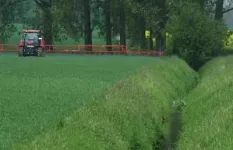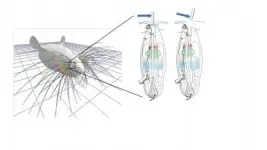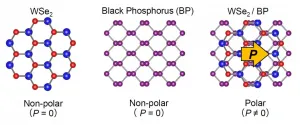Increasing applied pesticide toxicity threatens plants and insects
2021-04-01
(Press-News.org) A group of scientists from the University of Koblenz-Landau, Germany, has shown that for plants and insects the applied pesticide toxicity in agriculture has substantially increased between 2004 and 2016. In a paper published in the current issue of Science, the authors show that this pattern is even relevant in genetically modified (GM) crops that were originally designed to reduce pesticide impacts on the environment.
"We have taken a large body of pesticide use data from the US and have expressed changes of amounts applied in agriculture over time as changes in total applied pesticide toxicity," says lead author Ralf Schulz, professor for environmental sciences in Landau. "This provides a new view on the potential consequences that pesticide use in agriculture has on biodiversity and ecosystems".
The amount of insecticides used in US agriculture has decreased substantially by more than 40% between 1992 and 2016. Fish, mammals, and birds face lower applied toxicities than in the 1990s, because insecticide classes such as organophosphates, which show high vertebrate toxicity, are used less today. Aquatic invertebrates and pollinators, such as honeybees, yet experience the opposite: despite reduced applied amounts, applied toxicity for these species groups has more than doubled between 2005 and 2015. A shift in the insecticides used towards usage of pyrethroid and neonicotinoid insecticides is responsible for this trend.
The applied toxicity increases for herbicides as well, alongside the applied amount. In this case, terrestrial plants are facing the highest increase in applied toxicity. Plants and pollinators are ecologically strongly connected. Simultaneously increasing applied toxicities in both groups thus alert to potential strong overall negative effects on plant and insect biodiversity.
GM crops have been developed to reduce the dependency of agriculture on chemical pesticide use. The results of the new study, however, clearly reveal that even in the two most important GM crops in the US, corn and soybean, the applied toxicity increases, along with increasing GM adoption, at the same rates as for conventional crops.
According to the authors, the results of the study likely apply to many other regions dominated by modern agriculture, though often the data for a thorough evaluation of trends in applied toxicity are not publicly available. Ralf Schulz adds: "These results challenge the claims of decreasing environmental impact of chemical pesticides in both conventional and GM crops and call for action to reduce the pesticide toxicity applied in agriculture worldwide."
INFORMATION:
Bibliographical information
Ralf Schulz, Sascha Bub, Lara L. Petschick, Sebastian Stehle, and Jakob Wolfram (2021): Applied pesticide toxicity shifts towards plants and invertebrates, even in GM crops. Science; https://doi.org/10.1126/science.abe1148
Press contact:
Gerhard Lerch
Public Relations Department
Phone: +49 6131 37460-36
Email: glerch@uni-koblenz-landau.de
Professional contact:
Prof. Dr. Ralf Schulz
iES Landau, Institut für Umweltwissenschaften
Phone +49 6341 280-31327
Email: schulz@uni-landau.de
Background: University of Koblenz-Landau
As the second largest university in the state of Rhineland-Palatinate, the University of Koblenz Landau is one of the youngest universities in Germany. Since its foundation in 1990, it has developed into a research-oriented university with the profile areas of education, humanities, and environment. The courses offered range from education, humanities, culture, social and natural sciences to computer science in Koblenz and psychology in Landau. It is the only university in Rhineland-Palatinate to offer teacher training programs for all types of schools. In February 2019, the Rhineland-Palatinate state government decided to establish the Koblenz campus as an independent university and to merge the Landau campus with the TU Kaiserslautern to create a new technical university.
The number of students at the University of Koblenz-Landau has increased at an above-average rate compared to other state universities over the past decade. There are now about 17,000 students enrolled, about half of them in Koblenz and half in Landau. Nearly half of all teachers in Rhineland-Palatinate are trained at the university, but subject-related and interdisciplinary courses are also in high demand. In research, the university has proven successes in all three profile areas, including in coordinated funding programs of the German Research Foundation (DFG). In particular, the University of Koblenz-Landau took first place in the DFG ranking of education and educational sciences.
[Attachments] See images for this press release:

ELSE PRESS RELEASES FROM THIS DATE:
2021-04-01
We know your cat's whiskers are handsome -- but you can't even see the cool part.
The base of the whisker, which is responsible for sending touch signals to the brain, is hidden inside the follicle, a deep pocket that embeds the whisker within the skin. Because this section of the whisker is obscured, understanding precisely how whiskers communicate touch to the brain has been a longstanding mystery.
In a new study, an interdisciplinary team of researchers at Northwestern University has developed the first mechanical simulation of the whisker inside the follicle. By combining their new model with new anatomical observations, the researchers discovered that when whiskers touch an object, they ...
2021-04-01
For the first time, researchers have discovered a way to obtain polarity and photovoltaic behavior from certain nonphotovoltaic, atomically flat (2D) materials. The key lies in the special way in which the materials are arranged. The resulting effect is different from, and potentially superior to, the photovoltaic effect commonly found in solar cells.
Solar power is considered a key technology in the move away from fossil fuels. Researchers continually innovate more efficient means to generate solar energy. And many of these innovations come from the world of materials research. ...
2021-04-01
Despite a reduction in the total amounts of pesticides used, the toxicity of commonly used pesticides to nontarget species, partially aquatic invertebrates and pollinators, has increased considerably in recent decades, according to a new study analyzing 25 years of pesticide use. This has been driven by the widespread use of highly toxic pyrethroid and neonicotinoid pesticides. The findings challenge claims suggesting that the overall environmental impacts of pesticide use have declined. The impacts of applied pesticides on humans and the environment are often based on comparisons of use rates (e.g., kilograms per hectare) or the total amounts used (e.g., kilograms per year). However, from an environmental perspective, these weight-based ...
2021-04-01
Technology can be biased, and its design can disadvantage certain demographic groups. While efforts to address bias and promote fairness in technologies are rapidly growing in a variety of technical disciplines, Achuta Kadambi argues that similar growth is not occurring fast enough for medical engineering. "Although computer science companies terminate lucrative but biased facial recognition systems, biased medical devices continue to be sold as commercial products," writes Kadambi in a Perspective. Bias in medical devices results in undesirable performance variation across demographic groups and can greatly influence health inequality. For example, optical biosensors that use light to monitor vital signs like blood oxygenation ...
2021-04-01
In an analysis of thousands of fossil pollen and leaves spanning the Cretaceous-Paleogene (K/Pg) boundary, researchers found that the cataclysmic asteroid impact that resulted in the destruction of nearly 75% of all terrestrial life on Earth drastically restructured tropical forests, setting the stage for the evolution of what has become one of the planet's most diverse ecosystems - the neotropical rainforest. While the end-Cretaceous impact nearly 66 million years ago was catastrophic for terrestrial ecosystems worldwide, its long-term effects on tropical forests have remained a mystery. This is largely due to the lack of palaeobotanical exploration in the region, which has only just begun to provide ...
2021-04-01
An increase of dopamine in the brain's striatum triggers auditory hallucination-like experiences in mice, revealing a possible causal role for dopamine-dependent neurological circuits in symptoms of psychosis. These findings from a new study could inform novel targeted approaches to treating those with psychotic disorders, like schizophrenia. Auditory and visual hallucinations - perceptions of hearing or seeing something without observing external sensory stimuli - are central symptoms of psychotic disorders and are thought by some to be caused by excessive dopamine ...
2021-04-01
A single "super photon" made up of many thousands of individual light particles: About ten years ago, researchers at the University of Bonn produced such an extreme aggregate state for the first time and presented a completely new light source. The state is called optical Bose-Einstein condensate and has captivated many physicists ever since, because this exotic world of light particles is home to its very own physical phenomena. Researchers led by Prof. Dr. Martin Weitz, who discovered the super photon, and theoretical physicist Prof. Dr. Johann Kroha have returned from their latest "expedition" into the quantum world with a very special observation. They report of a new, previously ...
2021-04-01
(Santa Barbara, Calif.) -- Despite the fact that our planet is mostly ocean and human maritime activity is more intense than it has ever been, we know remarkably little about the state of the ocean's biodiversity -- the variety and balance of species that support healthy and productive ecosystems. And it's no surprise -- marine biodiversity is complex, human impacts are uneven, and species respond differently to different stressors.
"It is really hard to know how a species is doing by just looking out from your local coast, or dipping underwater on SCUBA," said Ben Halpern, a marine ecologist at the Bren School of Environmental Science & Management at UC Santa ...
2021-04-01
The humble lab mouse has provided invaluable clues to understanding diseases ranging from cancer to diabetes to COVID-19. But when it comes to psychiatric conditions, the lab mouse has been sidelined, its rodent mind considered too different from that of humans to provide much insight into mental illness.
A new study, however, shows there are important links between human and mouse minds in how they function -- and malfunction. Researchers at Washington University School of Medicine in St. Louis devised a rigorous approach to study how hallucinations are produced in the brain, providing a promising entry point to the development of much-needed new therapies for schizophrenia.
The study, published April 2 in ...
2021-04-01
Tropical rainforests today are biodiversity hotspots and play an important role in the world's climate systems. A new study published today in Science sheds light on the origins of modern rainforests and may help scientists understand how rainforests will respond to a rapidly changing climate in the future.
The study led by researchers at the Smithsonian Tropical Research Institute (STRI) shows that the asteroid impact that ended the reign of dinosaurs 66 million years ago also caused 45% of plants in what is now Colombia to go extinct, and it made way for the reign of flowering plants in modern tropical rainforests.
"We wondered how tropical rainforests changed after a drastic ecological perturbation such as the Chicxulub impact, so we looked for tropical plant fossils," said Mónica ...
LAST 30 PRESS RELEASES:
[Press-News.org] Increasing applied pesticide toxicity threatens plants and insects




